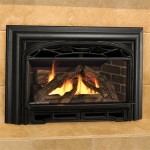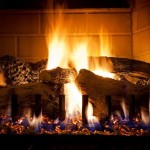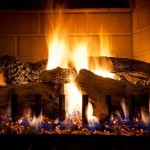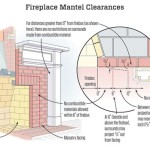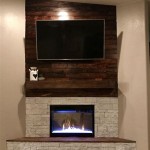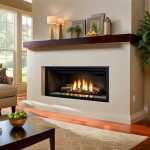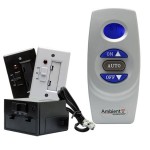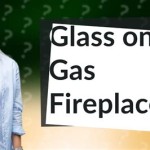Direct Vent Gas Fireplace Pipe Size: Essential Aspects for Safe and Efficient Operation
Direct vent gas fireplaces offer a convenient and energy-efficient way to enjoy the warmth and ambiance of a real fire without the hassle of traditional wood-burning fireplaces. However, proper installation and maintenance are crucial for ensuring safety and efficiency, and one key aspect to consider is the sizing of the vent pipe.
The size of the vent pipe is determined by the size and heat output of the gas fireplace. An undersized vent pipe can restrict exhaust gases and create backdrafts, while an oversized vent pipe can lead to reduced efficiency and heat loss. To ensure optimal performance, it is essential to choose the correct pipe size based on the fireplace's specifications.
Factors Affecting Vent Pipe Size:
- Fireplace heat output: The higher the heat output, the larger the vent pipe required.
- Vent pipe length: Longer vent pipes require larger diameters to overcome friction and ensure proper exhaust.
- Vent pipe configuration: Horizontal runs, elbows, and other fittings can increase the resistance to exhaust gases, necessitating a larger pipe size.
Types of Vent Pipes:
There are two main types of vent pipes used for direct vent gas fireplaces:
- B-vent: Made of galvanized steel or aluminum, B-vent pipes are designed to withstand high temperatures and are often used for shorter runs.
- FV-vent: Made of high-temperature-resistant plastic, FV-vent pipes are lightweight, corrosion-resistant, and can be used for longer runs and complex configurations.
Determining the Correct Pipe Size:
To determine the appropriate vent pipe size for your fireplace, it is best to consult the manufacturer's specifications. The installation instructions will typically include a table or chart that provides the recommended vent pipe size based on the fireplace's heat output and other factors.
If you are unsure about the correct pipe size, it is always advisable to err on the side of caution and choose a larger diameter pipe. An oversized pipe may not be as efficient, but it will not pose a safety hazard.
Proper Installation and Maintenance:
In addition to choosing the correct pipe size, proper installation and maintenance are vital for the safe and efficient operation of your direct vent gas fireplace.
- Ensure that the vent pipe is tightly connected to the fireplace and exhausts directly to the outside.
- Avoid bends or kinks in the vent pipe, as these can impede exhaust flow.
- Regularly inspect the vent pipe for any damage or blockages.
Conclusion:
Choosing the correct vent pipe size is essential for the safe and efficient operation of a direct vent gas fireplace. By considering the factors affecting vent pipe size, choosing the appropriate pipe type, and ensuring proper installation and maintenance, you can enjoy the warmth and ambiance of your fireplace with peace of mind.

Vented Vs B Vent Direct Free Dixie S

Superior Direct Vent Gas Fireplace Drt3000 Drt3045
Gas Fireplace Venting Explained Heat Glo
Understanding How Direct Vent Works Heat Glo

Majestic Slp 4 X 6 5 8 Direct Vent Pipe Length 24 Galvanized Slp24 North Country Fire

What Are The Best Ways To Vent A Gas Fireplace Zoroast
Gas Fireplace Venting Explained Heat Glo

Napoleon 4 X 7 Venting 16 Nap 4x7 Chimney S Hvacdirect Com

Majestic Sl1136 36 915mm Pipe Section

How To Guide Using Fireplace Flex Vent North Country Fire
Related Posts

